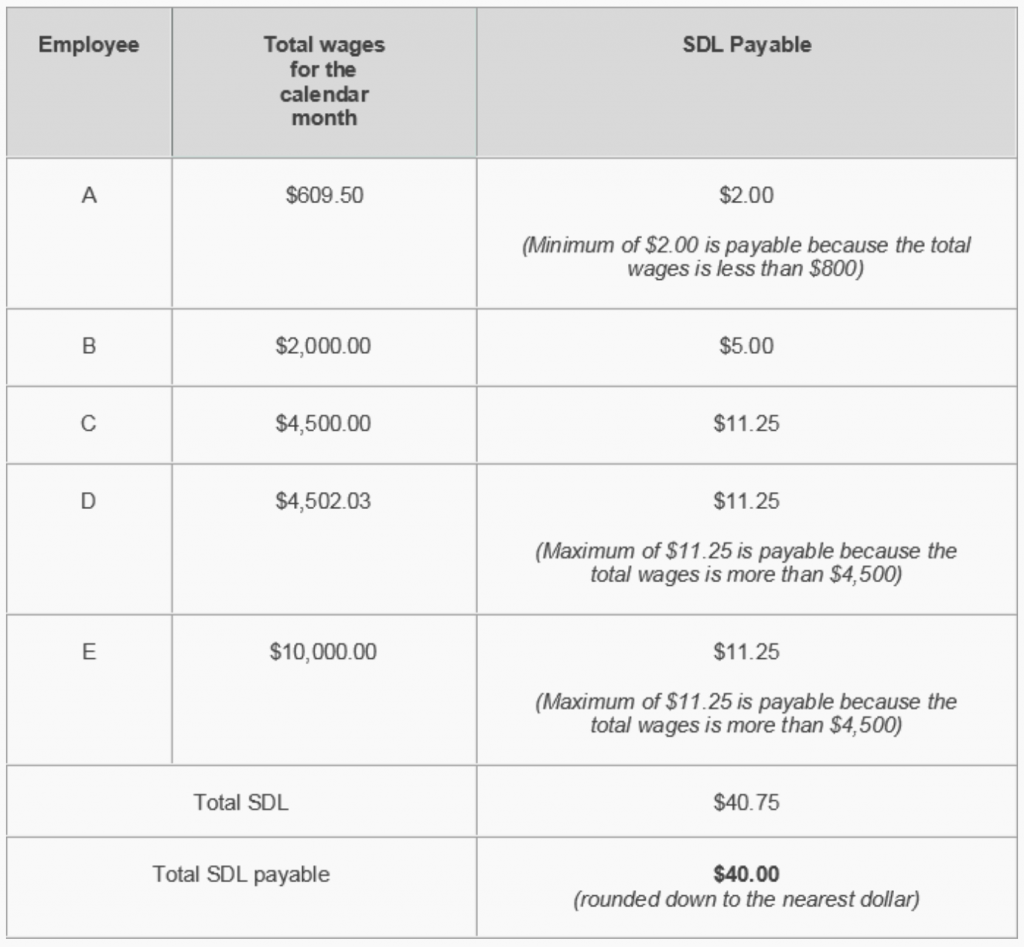Boost Your Skills: Unveiling The Game-Changing Skill Development Levy Rate – Take Action Now!
Skill Development Levy Rate: An Overview
Dear Readers,
Welcome to the informative article on skill development levy rate. In this article, we will discuss the details of the skill development levy rate, its purpose, and its impact on individuals and businesses. So, let’s dive into the topic and gain a better understanding of this important aspect of workforce development.
2 Picture Gallery: Boost Your Skills: Unveiling The Game-Changing Skill Development Levy Rate – Take Action Now!


Introduction
The skill development levy rate is a mandatory contribution imposed on employers in certain countries to promote skills development in the workforce. It is a government initiative aimed at enhancing the quality of the labor market and ensuring the availability of skilled professionals in various industries.
The levy rate is usually a percentage of the total monthly wage bill of the employer. The funds collected through this levy are utilized for various skill development programs, including training and apprenticeship schemes, vocational education, and other initiatives to upgrade the skills of the workforce.
The skill development levy rate has gained significant attention in recent years due to its potential to address the skill gaps and improve the overall productivity and competitiveness of the workforce.

Image Source: rocketcdn.me
In the following sections, we will explore the key aspects of the skill development levy rate, including its purpose, beneficiaries, implementation, advantages, disadvantages, and frequently asked questions.
What is Skill Development Levy Rate?
The skill development levy rate is a financial contribution that employers have to pay to the government to fund training and development programs for the workforce. It serves as a means to ensure that employers actively participate in enhancing the skills of their employees and contribute to the overall growth of the economy.
🔑 Key Point: The skill development levy rate is a mandatory levy imposed on employers to promote skills development in the workforce.
Who is Subject to Skill Development Levy Rate?
The skill development levy rate applies to all employers who meet the criteria specified by the government. The criteria may vary from country to country, but generally, it includes businesses of a certain size or with a certain number of employees.
🔑 Key Point: Employers meeting the government’s criteria are subject to the skill development levy rate.
When is the Skill Development Levy Rate Payable?

Image Source: tassure.com
The skill development levy rate is typically payable on a monthly basis along with other payroll taxes and contributions. Employers are required to calculate the levy amount based on the prescribed rate and the total monthly wage bill. The levy amount is then submitted to the relevant government authority within the specified deadline.
🔑 Key Point: The skill development levy rate is payable on a monthly basis as part of the employer’s payroll obligations.
Where is the Skill Development Levy Rate Utilized?
The funds collected through the skill development levy rate are utilized by the government to implement various skill development programs. These programs aim to enhance the skills of the workforce and address the existing skill gaps in different industries. The funds may be allocated to training institutions, vocational schools, apprenticeship schemes, and other initiatives that promote skill development.
🔑 Key Point: The skill development levy rate funds are used for implementing skill development programs and initiatives.
Why is the Skill Development Levy Rate Important?
The skill development levy rate plays a crucial role in bridging the skill gaps in the labor market. By enforcing mandatory contributions from employers, the government ensures that there is a sustainable funding source for skill development programs. These programs, in turn, help individuals acquire relevant skills, improve their employability, and contribute to the overall economic growth of the country.
🔑 Key Point: The skill development levy rate is important for promoting skill development and addressing skill gaps in the labor market.
How is the Skill Development Levy Rate Implemented?
The skill development levy rate is implemented through legislation and regulations set by the government. Employers are required to register for the levy and comply with the reporting and payment obligations. Non-compliance may result in penalties and legal consequences.
🔑 Key Point: The skill development levy rate is implemented through legislation and compliance requirements set by the government.
Advantages and Disadvantages of Skill Development Levy Rate
Advantages:
1. Enhanced Workforce Skills
The skill development levy rate ensures a continuous focus on skill enhancement, leading to a workforce with improved capabilities and productivity.
2. Increased Employability
By investing in skill development programs, individuals become more employable as they acquire relevant skills that are in demand in the job market.
3. Economic Growth
A skilled workforce contributes to the overall economic growth of the country by attracting investments and fostering innovation.
4. Reduced Skill Gaps
The levy rate helps address the skill gaps in the labor market by funding programs that target the areas with the highest demand for skilled professionals.
5. Employer Branding
Employers who actively participate in skill development initiatives are perceived as socially responsible and attractive to potential employees.
Disadvantages:
1. Financial Burden on Employers
The skill development levy rate adds to the financial burden of employers, especially small and medium-sized businesses.
2. Administrative Complexity
Complying with the reporting and payment obligations of the skill development levy rate can be administratively complex for employers.
3. Lack of Flexibility
Some employers may argue that the mandatory levy restricts their flexibility to allocate funds according to their specific training needs.
4. Compliance Challenges
Ensuring compliance with the levy rate requirements may pose challenges for employers, especially those operating in multiple jurisdictions.
5. Impact on Hiring Decisions
In some cases, the levy rate may influence the hiring decisions of employers, particularly when the cost of employing skilled professionals becomes significantly higher.
Frequently Asked Questions (FAQ)
1. Is the skill development levy rate applicable to all employers?
Yes, the skill development levy rate applies to employers who meet the criteria specified by the government.
2. How is the skill development levy rate calculated?
The levy rate is usually calculated as a percentage of the total monthly wage bill of the employer.
3. Can employers claim any tax benefits or exemptions for paying the skill development levy rate?
The availability of tax benefits or exemptions may vary depending on the legislation of the country. Employers should consult with their tax advisors for specific details.
4. What happens if an employer fails to pay the skill development levy rate?
Non-payment or non-compliance with the skill development levy rate may result in penalties, fines, or legal consequences as per the applicable laws.
5. How can employers ensure compliance with the skill development levy rate requirements?
Employers should familiarize themselves with the legislation and regulations related to the skill development levy rate and establish robust systems and processes to meet the reporting and payment obligations.
Conclusion
In conclusion, the skill development levy rate is a significant mechanism for promoting skills development in the workforce. By imposing mandatory contributions on employers, governments ensure that skill development programs are adequately funded, leading to an enhanced workforce, increased employability, and overall economic growth. While it may pose financial and administrative challenges to employers, its benefits in addressing skill gaps and fostering a skilled labor market cannot be ignored.
Final Remarks
Dear Readers, we hope this article provided you with valuable insights into the skill development levy rate. It is important for employers and individuals alike to understand the significance of skill development and actively participate in initiatives aimed at enhancing the skills of the workforce. As always, consulting with experts and staying updated with the relevant laws and regulations is crucial for effective compliance and optimum utilization of skill development opportunities.
This post topic: Offline Classes


